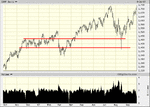Greetings. This is an area of interest to me and I thought I would add to the T2W collective knowledge by posting this study here.
Aptly Named... "Does Trend Following Work on Stocks"
http://www.trendfollowing.com/whitepaper/Does_trendfollowing_work_on_stocks.pdf
Aptly Named... "Does Trend Following Work on Stocks"
http://www.trendfollowing.com/whitepaper/Does_trendfollowing_work_on_stocks.pdf


